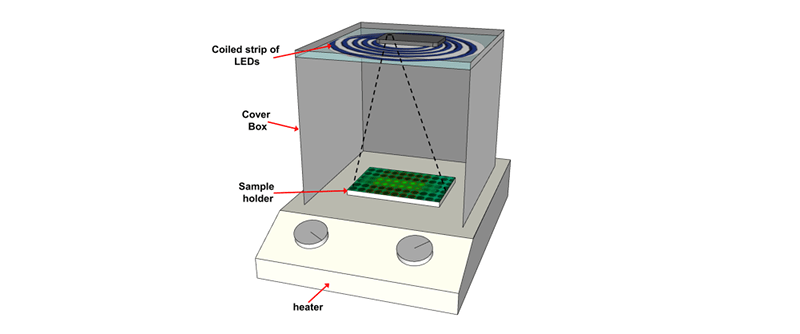When Mr. Spock beams down to a planet, he’s carrying a tricorder, a communicator, and a phaser. We just have our cell phones. The University of California Santa Barbara published a paper showing how an inexpensive kit can allow your cell phone to identify pathogens in about an hour. That’s quite a feat compared to the 18-28 hours required by traditional methods. The kit can be produced for under $100, according to the University.
Identifying bacteria type is crucial to prescribing the right antibiotic, although your family doctor probably just guesses because of the amount of time it takes to get an identification through a culture. The system works by taking some — ahem — body fluid and breaking it down using some simple chemicals. Another batch of chemicals known as a LAMP reaction mixture multiplies DNA and will cause fluorescence in the case of a positive result.
You have to dig a little to figure out what’s included in the kit. It appears that in addition to the chemicals, a hot plate, some LEDs, a cardboard box, an optical bandpass filter, and a centrifuge are all there is to it. The chemicals cost about a buck a test, but a typical diagnosis requires multiple tests which could run as much as $15.
There’s software, too, of course. Media reports claim it is available on the Google Play Store, but you won’t find it there. It is however on GitHub. If you need the centrifuge, there are open source designs, some 3D printed ones, or you can sacrifice a VCR.
















I thought LAMP was just limited to a web service stack. I guess the internet is more versatile that I thought.????
To get this through the FDA you’d end up charging $500 more per test. IF it made it through.
Is this shades of Theranos and the Einstein system?
LAMP certainly isn’t in the Theranos league. It’s a real technology.
It’s sort of similar to PCR. By adding a fluorescent dye, just like the dyes used in real-time PCR, we can see if there is successful amplification of the desired DNA amplicon. But we don’t care about real-time changes in the fluorescence signal, just a crude “fluorescent or not” visible signal in the tube at the end.
LAMP is isothermal, and holds the DNA and reagents constant at about 60 C. This means we don’t need the ~95C denaturation temperature of traditional PCR, and we don’t need to cycle the temperature right up and back down again for many cycles.
So we don’t need a Peltier element, and the heating device, electronics, cooling and power requirements are far smaller, simpler, cheaper, more reliable and more portable than a traditional thermal cycler – which all make it very useful in the field!
The problem with isothermal assays over more conventional realtime-pcr assays is that they are very difficult to multiplex (having more than one simultaneous reaction in each well each with a different fluorescent color). it is common to see standard real-time PCR assays with 2-4 colors in each well, multiplying the analytical throughput possible on the machine. (I design portable PCR/isothermal machines for a living :P)
Or use your dremeltool as a centrifuge -> e.g. https://www.thingiverse.com/thing:2199053
Something I’ve wondered about, taking this with a pound of salt (I’m not a biochemist or lab technician):
If you are looking for a specific pathogen within a fluid (be it blood, saliva, or something else), would it not be possible to use a microscope, a moving slide, and image recognition/machine learning? For example, let’s suppose you are scanning a slide of blood, and you are looking for, say, an E. Coli bacteria. How difficult would it be to scan a few square millimeters of blood on a slide, apply the image recognition, and get counts (and images) of things that don’t fit the normal criteria (e.g.: red blood cells or white blood cells)? Would a regular microscope not be powerful enough, or would it take something more like a scanning electron microscope to give sufficient resolution? It’d save the steps of having to grow a culture or apply gram-stain or things like that.
I’m no medtech but often the only way to differentiate between phyla of bacteria is a stain or selective media.
That’s quite possible. Again, I have no idea, but I’d be interested in finding out!
Too many bad KickStarters have me automatically thinking ‘scam’, fairly or unfairly whenever I read about something like this. It isn’t by the same people as SCiO food scanner is it?